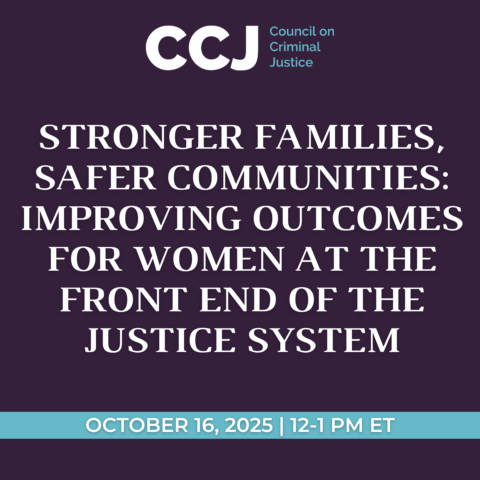Featured Speakers
Paul Carrillo – Executive Director, Southern California Crossroads
Javon Gregoire – Deputy Director, READI Chicago
David Muhammad – Executive Director, National Institute for Criminal Justice Reform
Fernando Rejón – Executive Director, Urban Peace Institute
Thomas Abt – COVID Commission Director and Senior Fellow, Council on Criminal Justice
Abby Walsh – Vice President, Council on Criminal Justice
Strategies that Work
Community-based practitioners are leading the way in developing and implementing strategies that are proven to prevent violence in our cities and neighborhoods. Cognitive behavioral therapy (CBT) is therapy, administered individually or in groups, that is designed to make people more aware of their own thoughts, help them better understand the consequences of their actions, and motivate them to adopt new strategies for both. It uses concrete techniques such as modeling and role playing, then provides feedback to help individuals practice new choices and habits. CBT is one of several critical components of programs like READI Chicago, an innovative model that engages men who are most highly impacted by gun violence and connects them to support services. Studies show that CBT reduces recidivism, particularly for those at higher risk of offending.
Another Chicago program, Becoming A Man, was found to reduce violent-crime arrests among participating youth in half, and boosts the high school graduation rates of participants by nearly 20 percent.
READI Deputy Director Javon Gregoire noted the importance of CBT for her program’s participants – and the life-changing effect it can have on their decisions. Describing the moment just before individuals take action to commit a crime, she said, “There are five seconds in which everything stops and is silent, but their life flashes before their eyes … and you’re waiting for someone to tell you to stop. Cognitive behavioral therapy gives our participants the tools to empower themselves … to be that something to say stop, don’t do it.”
Hospital-based violence intervention incorporates trusted community members, as well as treatment and service providers, into the recovery process for victims of interpersonal violence, providing trauma-informed care and a host of services in a hospital-based setting.
Paul Carrillo leads violence-prevention efforts at Southern California Crossroads, a program utilizing hospital-based intervention to provide services for gun violence victims to safely reintegrate back into their communities. Services include case management, legal advocacy, anger management counseling, and tattoo removal, but the core value of the approach lies in working with hospital providers to treat high-risk patients during their hospital recovery.
Research indicates the approach works – three studies showed reduced injury recidivism, as well as a positive increased service use, attitude change, and decreases in violence-related behavior. A recent California study compared the incidence of new injuries among a group of patients served by a violence prevention program and detected a decrease of four percent after controlling for demographic characteristics of the patients. Other studies have found lower rates of both arrest, re-injury, and rehospitalization after intervention by a hospital-based prevention program, and participants in a hospital-based prevention program in Baltimore were less likely to be rearrested or incarcerated compared with those assigned to a control group.
Carrillo said, “To me, ‘community-based’ means that the solutions and the people doing the work are from the community. At the same time, communities can sometimes be too prideful in not embracing or sitting down with outsiders with expertise. It has to be a partnership that is respectful and inclusive.”
Street outreach or violence interruption efforts bring in trained professionals, often those with lived experience and credibility in the community, to address violence. Street outreach workers work directly with gang members and their families, with the ultimate goal of deescalating violence and brokering peace between rival individuals and groups.
Fernando Rejón leads efforts at the Urban Peace Institute, a leading training program and technical assistance provider working on street outreach in Los Angeles and around the country. In 2007, the city instituted a comprehensive strategy to address gang violence, pairing law enforcement with street outreach workers in response to gang-related incidents.
Evaluations indicate that the partnership worked, resulting in sizeable reductions in retaliation after neighborhood conflicts. During the study period, retaliations from conflicts were 43% lower when street outreach workers were notified, as compared to conflicts where only the police were notified.
Focused deterrence is a set of strategies centered on communicating clear incentives to those at high-risk of committing gun violence. Law enforcement works with trusted community members and service providers to identify the small number of people committing the most violence, inform them of their risk of apprehension and conviction, and offer support services like job training, life coaching, and educational opportunities. Only those who persist in committing violent offenses are met with narrowly targeted investigations, arrests, and prosecutions.
David Muhammad is the Executive Director of the National Institute for Criminal Justice Reform, where he helped lead efforts to implement the Ceasefire (aka focused deterrence) Gun Violence Reduction Strategy in Oakland and Stockton. In Oakland, the strategy yielded a 50% reduction in shootings and homicides over a seven-year period.
Numerous other cities have implemented focused deterrence strategies over the years, including Chicago, Boston, Los Angeles, and Detroit – and the research indicates it’s worked. A 2018 paper in the journal of Criminology & Public Policy found that the strategy has produced positive results in all of the 12 cases where it has been rigorously studied.
An Integrated, Evidence-Based Approach
These four strategies have been successfully implemented in some of the nation’s most violent cities, and their success demonstrates the potential for city-wide efforts featuring such evidence-based approaches. As Gregoire observed, “It’s really simple. It’s very important to know what works so we can do more of it, especially now during a time where we’re clamoring for innovative strategies to [address] an ever-evolving issue.” It’s also true that each strategy should be treated as one piece of a successful, multi-dimensional approach to reducing violence. Strong leadership is also key, and that means going beyond a police chief or other agency head. Instead, success depends upon a commitment by a city’s leadership to hire and fund a high-level coordinator to make sure these strategies work in unison. Muhammad of the National Institute for Criminal Justice Reform made this need clear, saying, “Is gun violence a priority for you? And can you prove it? Start with assigning someone high level and competent, whose full-time job it is to reduce gun violence in the city and to coordinate with all the community-based folks on the ground every day.”
Police Part Of, But Not the Whole Solution
As the nation reckons with the role of law enforcement and the future of public safety, practitioners on the ground insist that community-based leaders are a critical part of the solution.As Rejón noted, “We need to be making sure that people with lived experience, people that have backgrounds, people who come from these communities and leaders are invested in, trained and not only have access to jobs, but can really help build the infrastructure that is needed to transform their communities.” Such participation also is essential to improve relationships between communities and the police. Rejón argued, “It’s very hard to have a conversation with law enforcement when there’s an unequal power dynamic. If there’s not a community-based voice that is empowered and supported, that it’s not as easy to have conversations with law enforcement. But when there is, we can begin to bridge the gaps and work in partnership.”
When law enforcement provides community-based programs with the space, support, and trust to operate, it benefits both parties – reducing the burden on law enforcement and decreasing violence. Rejón put it this way: “Just enforcing laws does not generate safety. And that’s part of the narrative that we have to change.”
The Future of Violence Reduction
Despite evidence supporting the effectiveness of violence-reduction strategies, programs continue to struggle because of a lack of funding. Panelists called on leaders to send more support to these strategies immediately.
Gregoire said, “I think the takeaway here is that now is the time to be bold, we can no longer continue to accept the status quo. We have to be loud and vocal about services and support, specifically the needs of our communities … We cannot no longer sit down. We have to be bold and stand up. We have lives at stake here.” Abt concluded, “Urban violence is not an intractable or impossible challenge. We can reduce it, and in fact we have on many occasions. These strategies are proven, cost-effective, and ready to be implemented now.”




